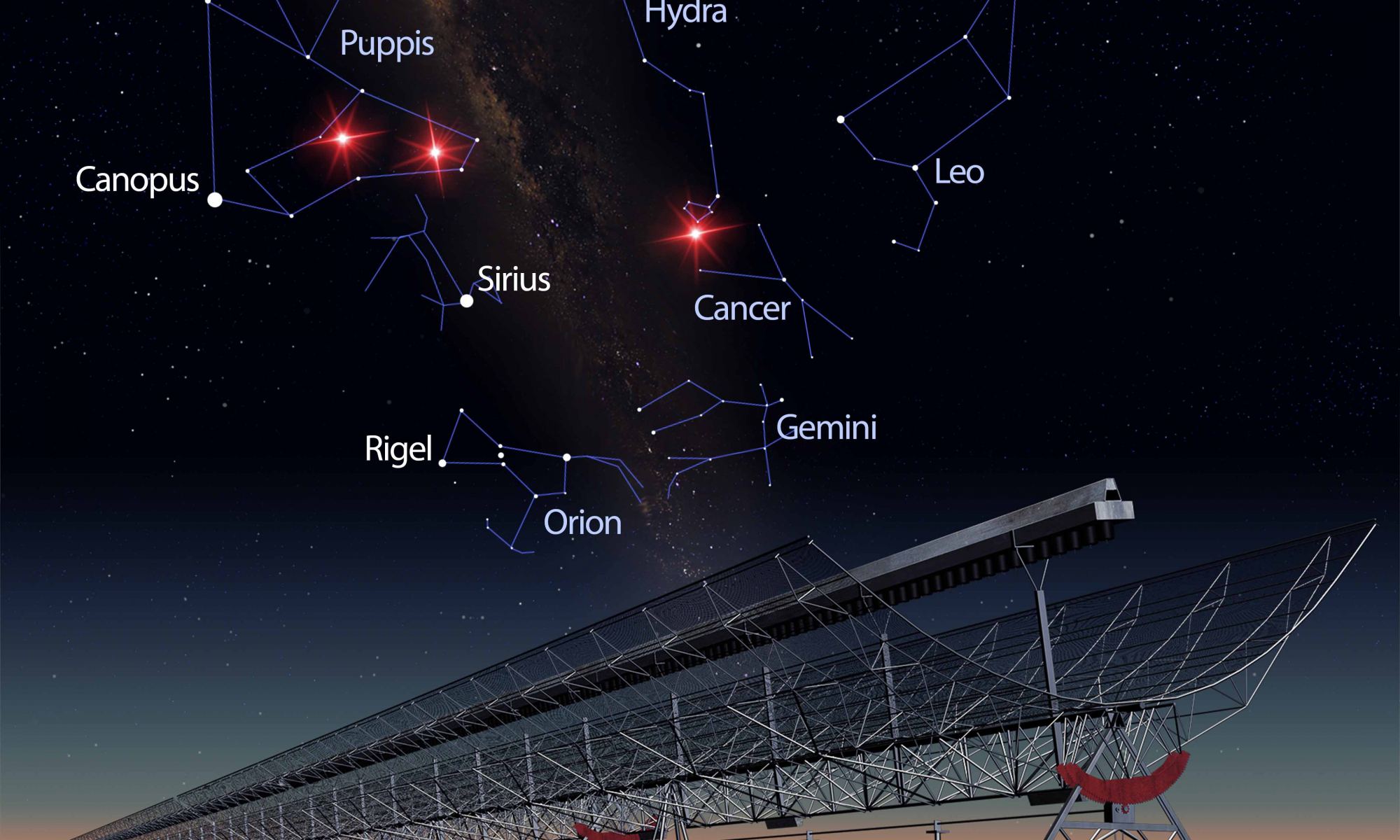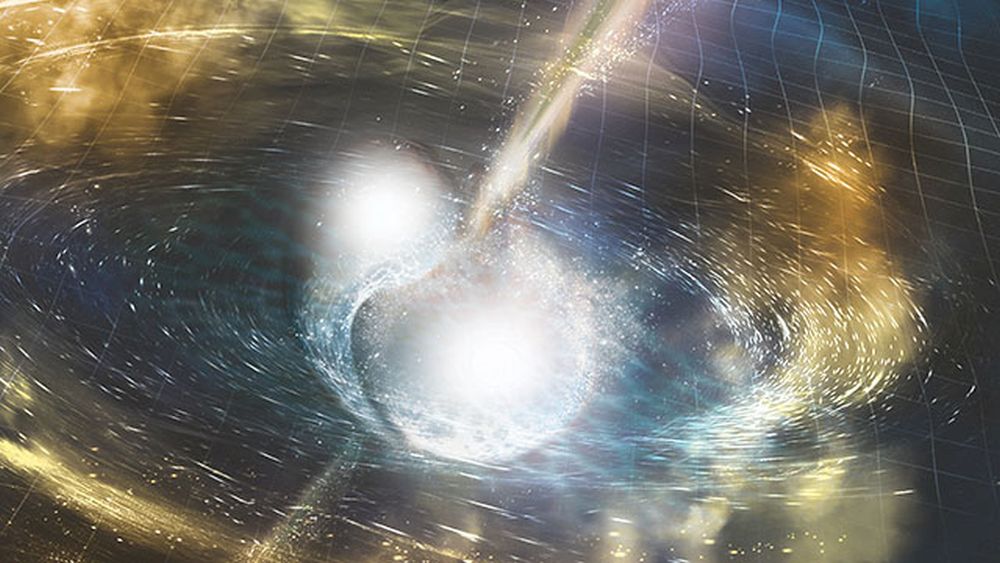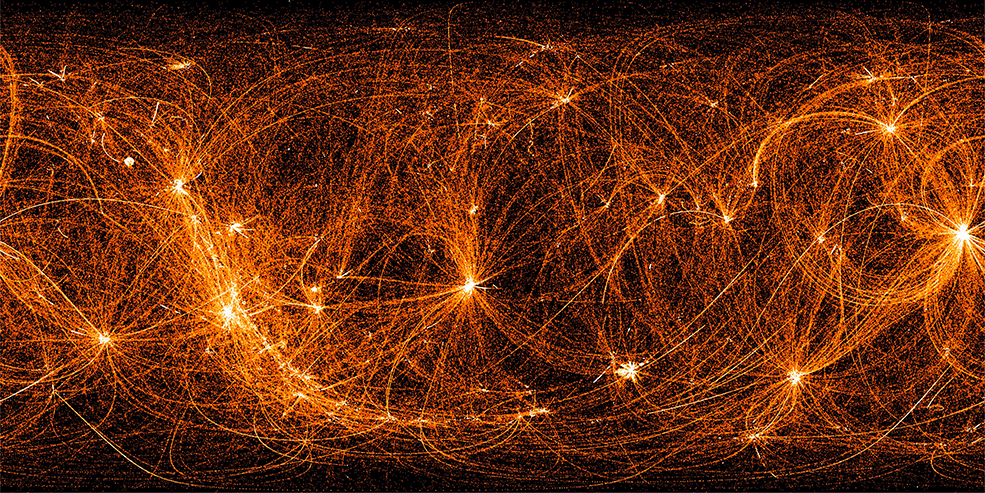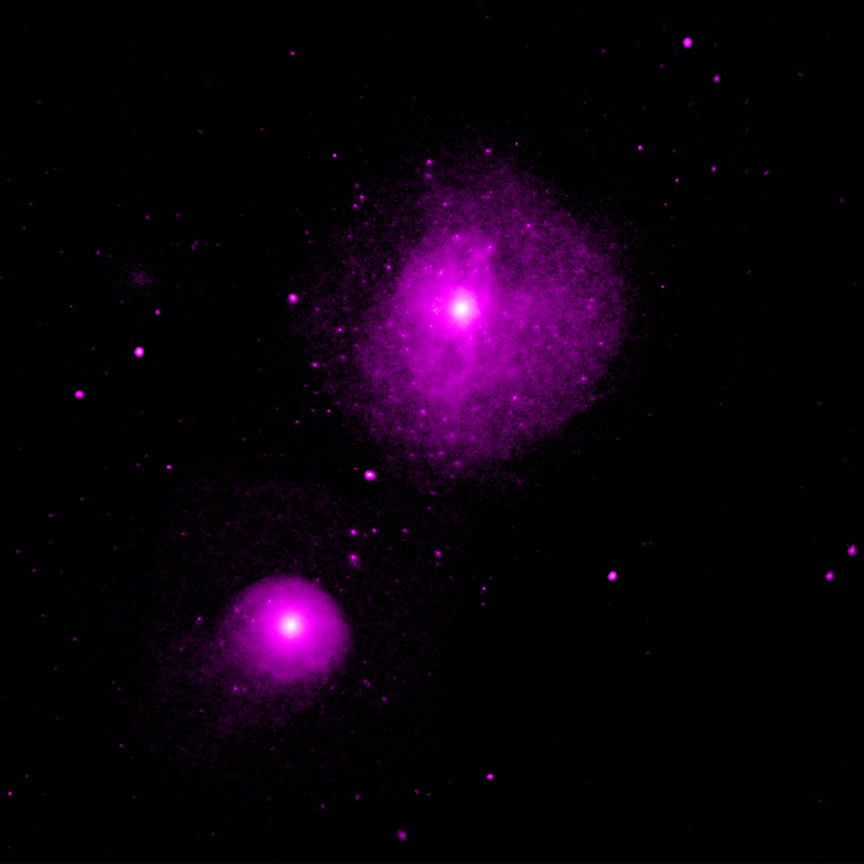Now and then there are bright flashes of radio light in the sky, and they are bothering astronomers. They are called Fast Radio Bursts (FRBs), and they’re like the chirp of a smoke alarm that needs its battery changed. They last for such a short time that it’s difficult to track down the source. They have become a nagging mystery in astronomy.
Continue reading “A Fast Radio Burst Has Been Detected From Inside The Milky Way”Neutron Star Measures Just 22 Kilometers Across

How big is a neutron star? These extreme, ultra-dense collapsed stars are fairly small, as far as stellar objects are concerned. Even though they pack the mass of a full-sized star, their size is often compared to the width of a medium-to-large-sized city. For years, astronomers have pegged neutron stars at somewhere between 19-27 km (12 to 17 miles) across. This is quite actually quite precise, given the distances and characteristics of neutrons stars. But astronomers have been working to narrow that down to an even more precise measurement.
An international team of researchers has now done just that. Using data from several different telescopes and observatories, members of the Max Planck Institute for Gravitational Physics, theAlbert Einstein Institute (AEI) have narrowed the size estimates for neutron stars by a factor of two.
Continue reading “Neutron Star Measures Just 22 Kilometers Across”Astronomers See Space Twist Around A White Dwarf 12,000 Light Years Away

The theory of general relativity is packed with strange predictions about how space and time are affected by massive bodies. Everything from gravitational waves to the lensing of light by dark matter. But one of the oddest predictions is an effect known as frame-dragging. The effect is so subtle it was first measured just a decade ago. Now astronomers have measured the effect around a white dwarf, and it tells us how some supernovae occur.
Continue reading “Astronomers See Space Twist Around A White Dwarf 12,000 Light Years Away”Astronomers Finally Find the Neutron Star Leftover from Supernova 1987A
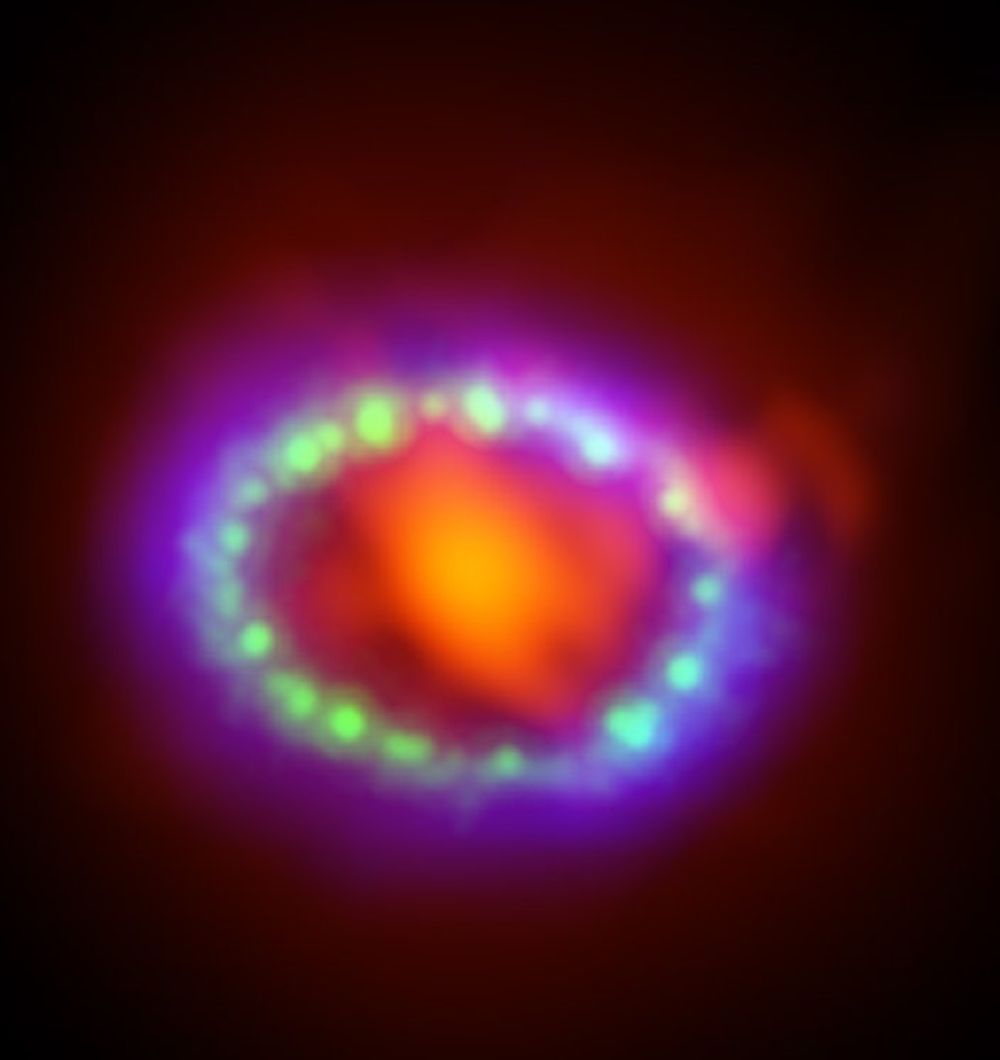
Astronomers at Cardiff University have done something nobody else has been able to do. A team, led by Dr. Phil Cigan from Cardiff University’s School of Physics and Astronomy, has found the neutron star remnant from the famous supernova SN 1987A. Their evidence ends a 30 year search for the object.
Continue reading “Astronomers Finally Find the Neutron Star Leftover from Supernova 1987A”Astronomers See Strontium in the Kilonova Wreckage, Proof that Neutron Star Collisions Manufacture Heavy Elements in the Universe

Astronomers have spotted Strontium in the aftermath of a collision between two neutron stars. This is the first time a heavy element has ever been identified in a kilonova, the explosive aftermath of these types of collisions. The discovery plugs a hole in our understanding of how heavy elements form.
Continue reading “Astronomers See Strontium in the Kilonova Wreckage, Proof that Neutron Star Collisions Manufacture Heavy Elements in the Universe”The Most Massive Neutron Star has been Found. It’s ALMOST the Most Massive Neutron Star That’s Even Possible
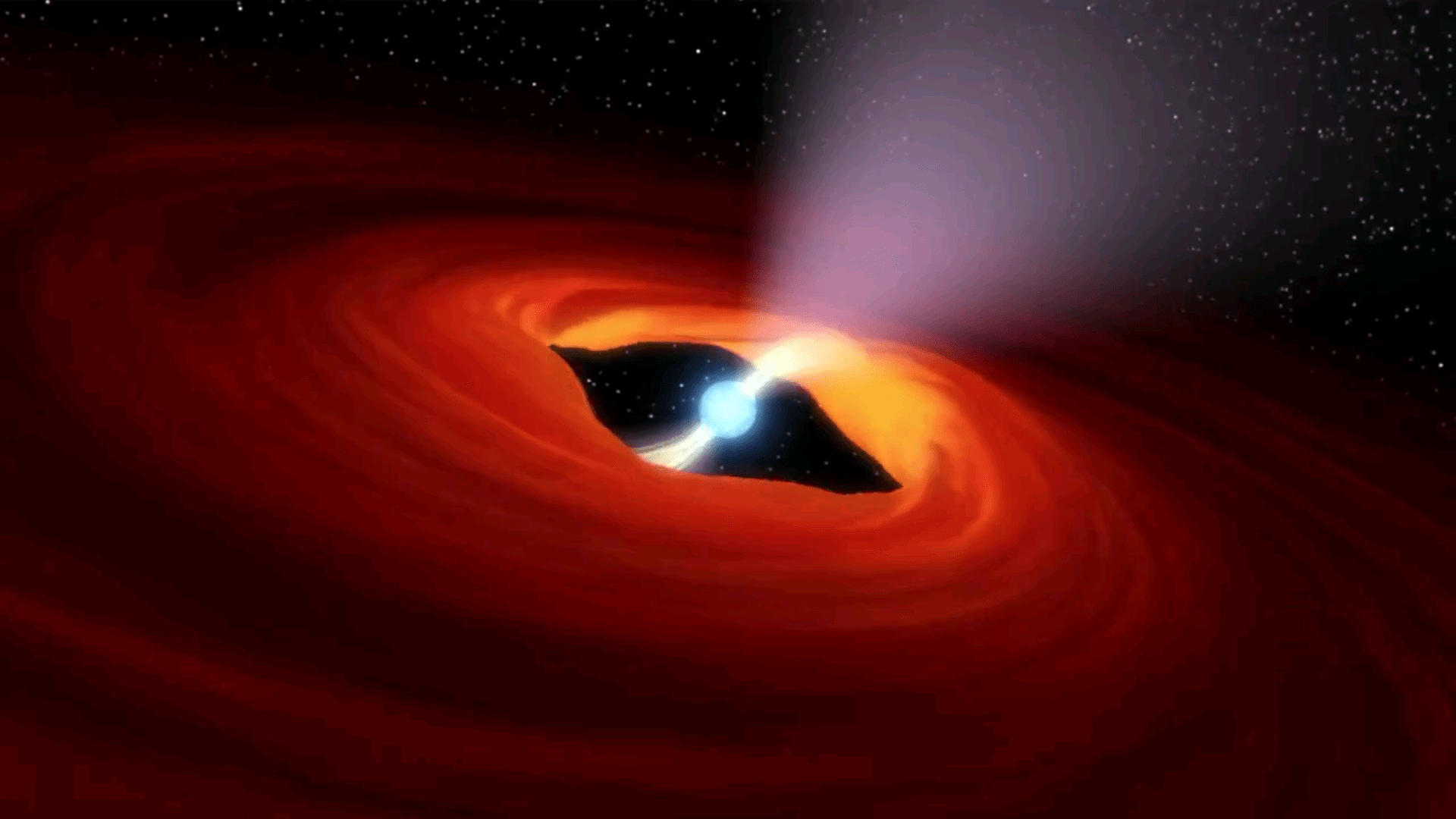
Neutron stars are the end-state of massive stars that have spent their fuel and exploded as supernovae. There’s an upper limit to their mass, because a massive enough star won’t become a neutron star; it’ll become a black hole. But finding that upper mass limit, or tipping point, between a star that becomes a black hole and one that becomes a neutron star, is something astronomers are still working on.
Now a new discovery from astronomers using the National Science Foundation’s (NSF) Green Bank Telescope (GBT) have found the most massive neutron star yet, putting some solid data in place about the so-called tipping point.
Continue reading “The Most Massive Neutron Star has been Found. It’s ALMOST the Most Massive Neutron Star That’s Even Possible”Hubble Has Looked at the 2017 Kilonova Explosion Almost a Dozen Times, Watching it Slowly Fade Away
In 2017, LIGO (Laser-Interferometer Gravitational Wave Observatory) and Virgo detected gravitational waves coming from the merger of two neutron stars. They named that signal GW170817. Two seconds after detecting it, NASA’s Fermi satellite detected a gamma ray burst (GRB) that was named GRB170817A. Within minutes, telescopes and observatories around the world honed in on the event.
The Hubble Space Telescope played a role in this historic detection of two neutron stars merging. Starting in December 2017, Hubble detected the visible light from this merger, and in the next year and a half it turned its powerful mirror on the same location over 10 times. The result?
The deepest image of the afterglow of this event, and one chock-full of scientific detail.
Continue reading “Hubble Has Looked at the 2017 Kilonova Explosion Almost a Dozen Times, Watching it Slowly Fade Away”Neutron Star Suffers a “Glitch”, Gives Astronomers a Glimpse Into How They Work
What, exactly, is the inside of a neutron star like?
A neutron star is what remains after a massive star goes supernova. It’s a tightly-packed, ultra-dense body made of—you guessed it—neutrons. Actually, that’s not absolutely true.
Continue reading “Neutron Star Suffers a “Glitch”, Gives Astronomers a Glimpse Into How They Work”NASA is building up a map of the entire sky seen in X-rays, line by line with its NICER experiment
In June of 2017, NASA’s Neutron Star Interior Composition Explorer (NICER) was installed aboard the International Space Station (ISS). The purpose of this instrument is to provide high-precision measurements of neutron stars and other super-dense objects that are on the verge of collapsing into black holes. NICER is also be the first instrument designed to test technology that will use pulsars as navigation beacons.
Recently, NASA used data obtained from NICER’s first 22 months of science operations to create an x-ray map of the entire sky. What resulted was a lovely image that looks like a long-exposure image of fire dancers, solar flare activity from hundreds of stars, or even a visualization of the world wide web. But in fact, each bright spot represents an x-ray source while the bright filaments are their paths across the night sky.
Continue reading “NASA is building up a map of the entire sky seen in X-rays, line by line with its NICER experiment”Astronomers are Finding Binary Pairs of Stars Thrown out of Galaxies Together
A rogue star is one that has escaped the gravitational pull of its home galaxy. These stars drift through intergalactic space, and so are sometimes called intergalactic stars. Sometimes, when a rogue star is ejected from its galaxy, it drags its binary pair along for the ride.
Continue reading “Astronomers are Finding Binary Pairs of Stars Thrown out of Galaxies Together”
